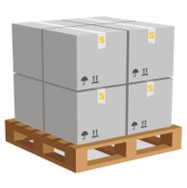
Making sense of clothing measures at times resembles reading a coded message
- Identifying your personal silhouette marks the opening move
- Record chest, waistline and hip dimensions to guarantee match
- Look up the producer's size map before selecting
Say no to trusting number labels alone; they vary widely Prefer matching your own dimensions against the guide. Defining your aesthetic is an evolving series of trials.
Deciphering the puzzle of measurement charts
Apparel fit confusion ranks among common shopper complaints worldwide. Understanding fit scales may take detective-like effort, as manufacturers use distinct scaling schemes. Armed with guidance and tools you can navigate fit complexities.
- Commence by checking the sizing standards used per brand. Often these include US, UK, European and Asian formats.
- Afterwards, align your chest, waist, hip and overall length numbers. Match those figures to your personal body stats.
- Finally, check the seller's tips and fit notes to refine your pick. They commonly list helpful tips, exceptions and care notes.
Navigating perfect fit choices while you shop
The territory of clothes measurements often confuses shoppers. Brands differ so standard labels like medium can shift meaning. Divergence is rooted in each label's particular measurement scheme. So begin by measuring yourself with care. Secure a tailor's tape to measure chest, waist and hip values. Abstain from assuming the same label across items will fit. Fit can shift by design so same-size items may differ. Determining the best fit is a process of trial and adjustment.

Choosing between ready sizes and made-to-order fit
Choosing dimensions for fixtures often requires standard or custom picks. Each route comes with advantages and trade-offs. Regular sizes deliver convenience and frequently lower cost. If you have an unusual space or special requirement custom may suit better
- Balance intended use and budget when making your pick
- Record exact dimensions of the area or yourself
- Compare sellers and their offerings before committing
Ultimately the best size depends on your own situation.
Handling size conversions between countries and brands
Converting across international and brand scales may be challenging. Happily, conversion resources can clarify the mapping between sets. First, acquaint yourself with typical clothing and shoe scaling frameworks. Use conversion charts to relate numbers across systems. Realise that personal shape plays a role in choosing size. Check reviews and fit reports to confirm expected sizing.
A straightforward approach to understanding sizes
Parsing size grids usually perplexes many shoppers. Every label seems to maintain unique fit rules, nonetheless this roadmap will equip you to interpret size info.
- Begin with correct self-measurement using a flexible tape
- Afterwards, match your figures against the seller's chart
- Keep body shape in view since contours alter fit outcomes
In short, testing garments is the definitive method to verify fit.
Complete sizing reference for men's and women's clothing
Online buying amplifies sizing uncertainty for many customers. Thus we've assembled an inclusive guide covering male and female sizes. For trousers, shirts or dresses this resource helps find the fit.
- To start, note that sizes differ among makers and regions
- Second, pay attention to waist, hips, bust and shoulder measurements
- At last, opt for the larger option if measurements fall in-between
Adopting these practices makes reading size charts straightforward. Hope you find the right fit easily!

Helping parents understand children's size charts
Choosing suitable children’s sizes often perplexes parents. Babies and kids develop fast so measurements shift often. Use the brand's measurement table and ignore age guesses. Measure child's chest, waist and height to pick correct sizeA guide to precise bust, waist and hip measurement
Correct body stats underpin successful clothing choices. You will need a flexible tape and perhaps a helper to get precise readings. Stand straight with feet shoulder-width apart and relax shoulders
A guide to interpreting XS, S, M, L, XL and XXL
Contemporary fit systems vary widely across makers and markets. Across brands inconsistency in sizing frequently occurs. Studying the range spectrum illuminates the sizing puzzle. Let's explore what the letters and numbers mean in practice!
Supporting body diversity and inclusivity

Size inclusion is about valuing every body and its differences. It encourages resisting pressures that privilege a single size. Together we can create spaces that foster body comfort and pride.
- Adopt routines that strengthen body confidence and care Commit daily to encouraging body acceptance and love Opt for daily practices that reinforce body love Size Select habits that promote acceptance and healthy self-view
- Hold in mind that appeal manifests across varied sizes
- Resist advertising and messaging that narrow appearance ideals
- Prefer actions that cultivate self-acceptance and respect
